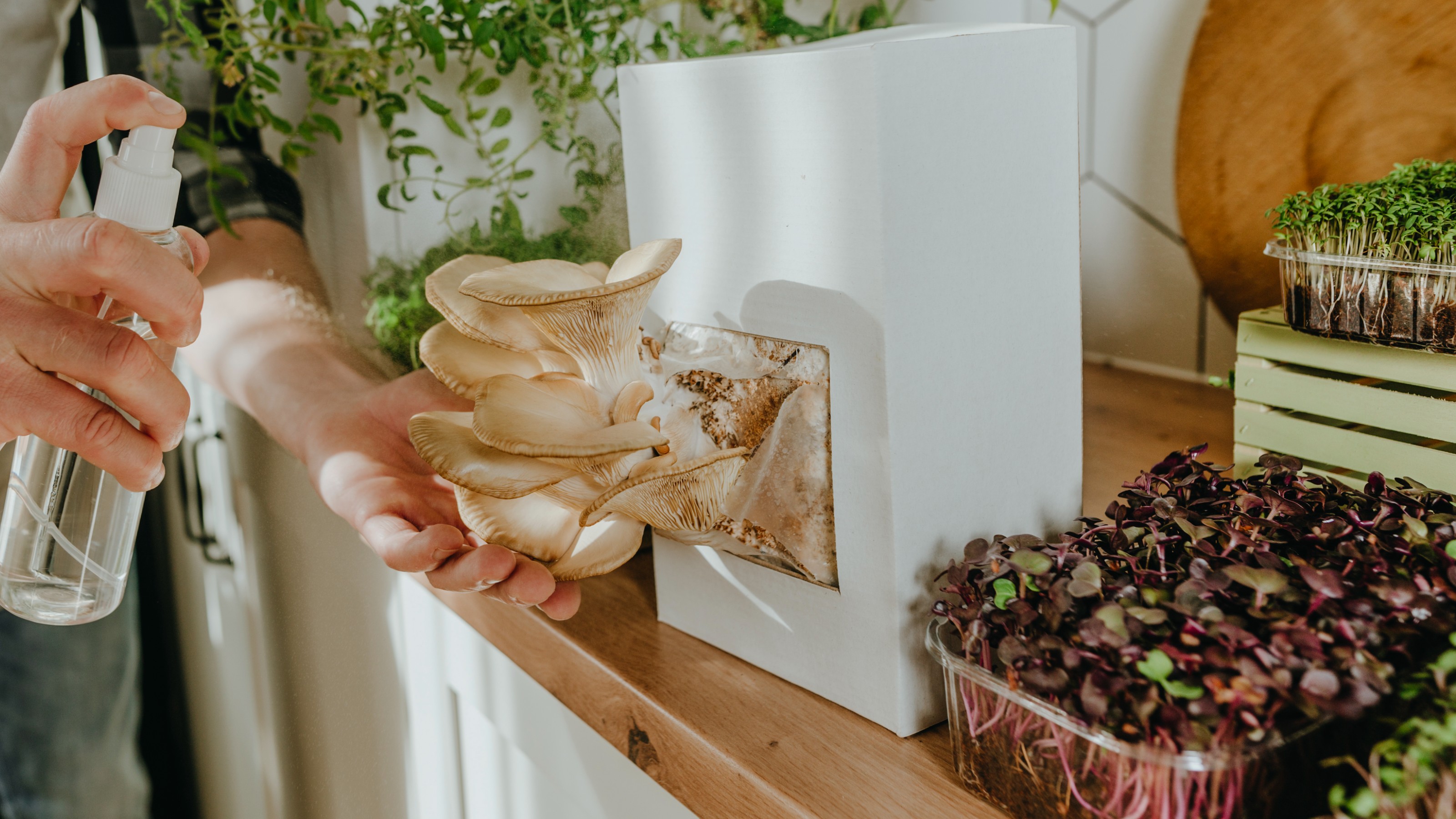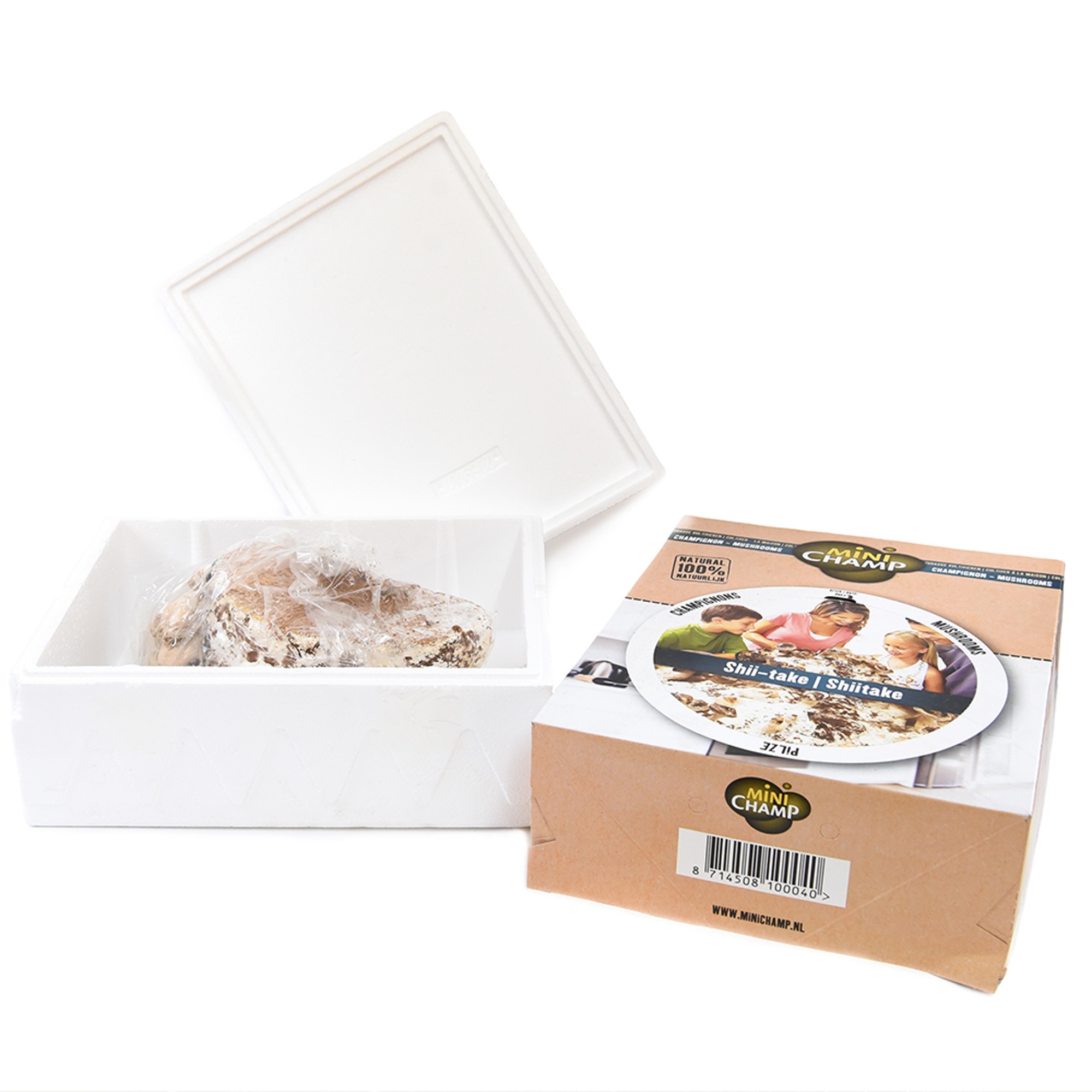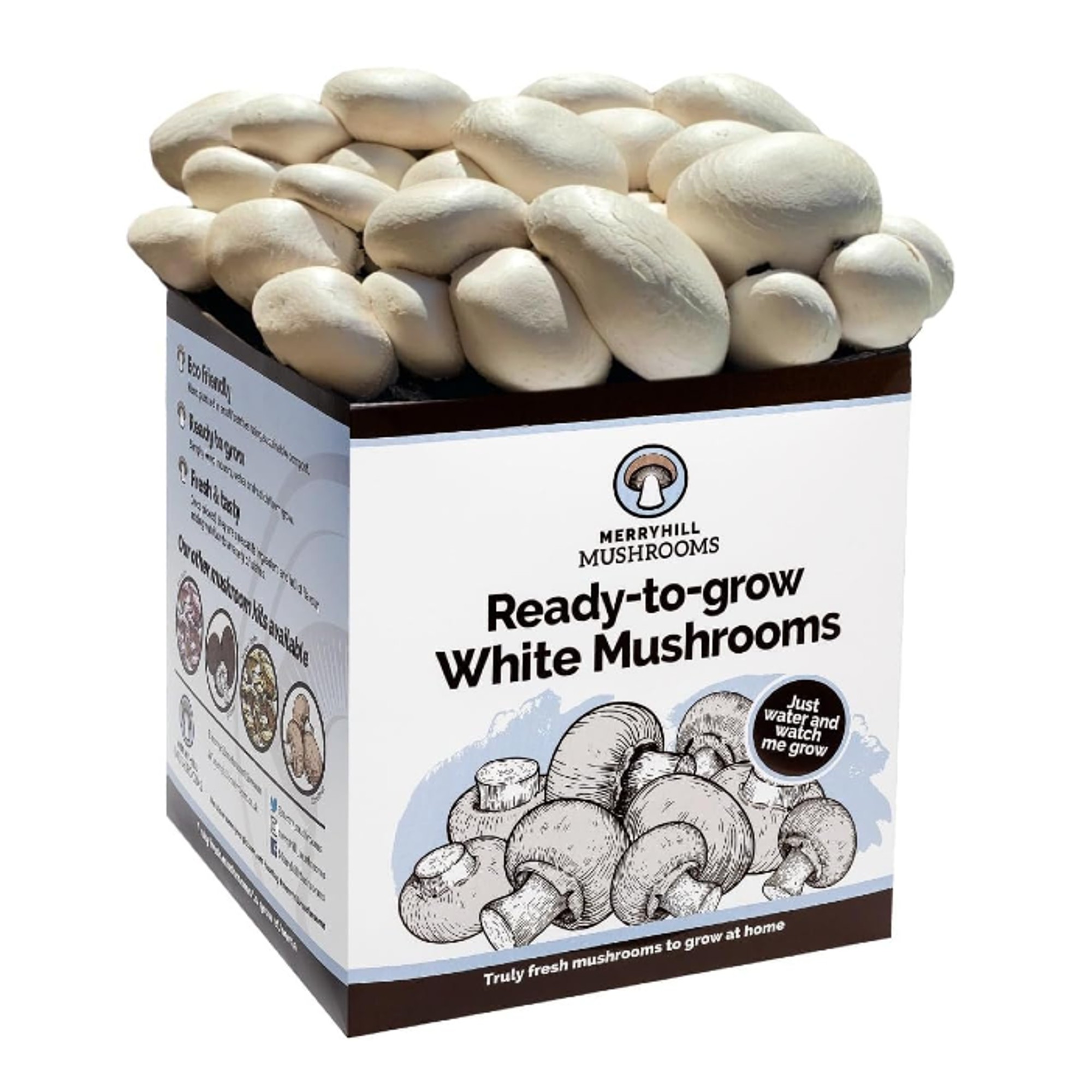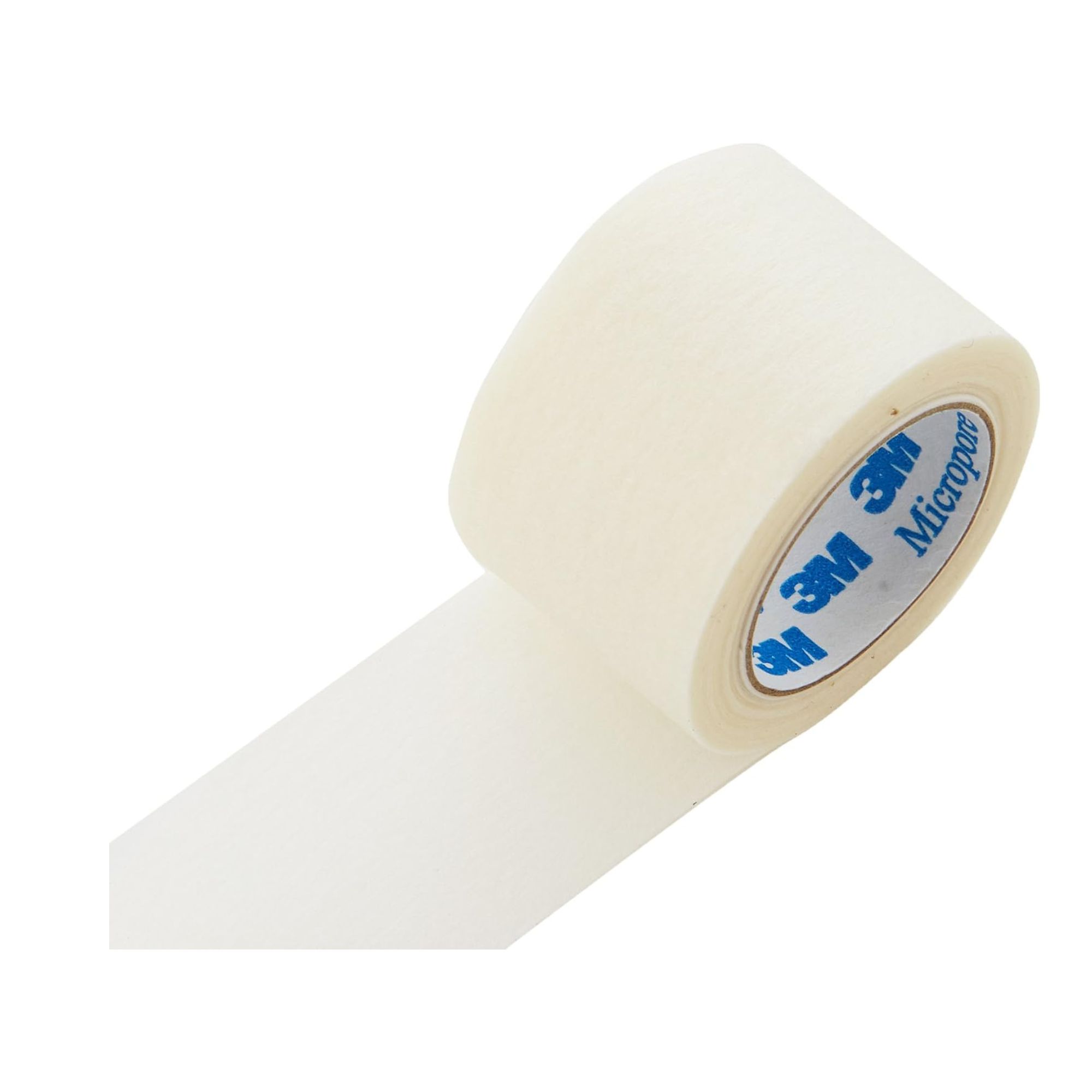How to grow mushrooms at home – the easiest ways to cultivate your own shrooms either indoors or outdoors
Grow your own mushroom supply from the comfort of your own home


Lauren Bradbury
Let’s be honest; mushrooms are seriously fun guys. And while we promise we won’t make any more mushroom-related puns, we can’t promise that you won’t fall in love with growing your own mushrooms at home.
After all, the world has had a real mushroom awakening over the past few years. A staple in vegetarian cooking and a popular choice for those looking to grow their own fruits and vegetables, more and more people are growing mushrooms at home. But how do you do it, really? And where do you start?
If you want to join the shroom revolution, you’ll be happy to know that there are many ways to grow your own mushrooms at home - but choosing the option that suits your skills, requirements, and space is important. So, we’ve got everything you need to know about growing either indoors or outdoors.

How to grow mushrooms at home
As well as having your own endless supply, home-grown mushrooms also open your palate up to new tastes and flavours. Lorraine Caley from Caley Brothers Mushrooms explains, ‘By growing your own mushrooms, it gives you the opportunity to also try many different and delicious mushrooms that aren't yet available in the shops.’
But before you get to eat your home-grown product, you first have to decide where and how you’re going to grow them. After all, there are a few options to choose from.
How to grow mushrooms indoors
If you only have a small garden or don’t have a garden at all, you’ll be happy to know that there are many ways to grow mushrooms indoors. Just be careful, as mushroom spores can spread very easily - especially if you have a damp house. So, take protective measures and always grow them in a location that won’t dip below 10C or rise above 20C.
1. Use a mushroom growing kit
One of the easiest ways to grow mushrooms is with mushroom growing kits, which are now readily available to buy for as little as £17. By choosing this method, you can select the kind of mushrooms you’d like to grow and buy everything you need to grow mushrooms at home in one package.
Sign up to our newsletter for style inspiration, real homes, project and garden advice and shopping know-how
As if that wasn’t enough, these kits also come with all of the instructions you need to successfully grow mushrooms - as well as the potential risks you need to consider.
Steve Chilton, garden expert from LeisureBench, adds, ‘Mushrooms can be a little difficult to grow, but luckily you can now commonly buy mushroom growing kits, which come with everything you need. I recommend this as the easiest method for beginners.’
But if you’re looking for more of a challenge, you might want to consider a different option.

Steve is a passionate and knowledgeable garden expert with several years of experience within the field. As the director of LeisureBench, an industry-leading garden furniture company, Steve has developed strong expertise for all things nature and plants.
2. Grow in containers

If the option above doesn't quite fit your home-grown mushroom desires, you could choose to grow mushrooms in containers instead.
‘It’s possible to grow mushrooms from spawn in manure-filled containers or beds,’ starts Fiona Jenkins, gardening expert at MyJobQuote.co.uk.
Your chosen container can be anything from a box or a bucket to a garden bed or even a plastic bag. But to be able to grow your mushrooms in these containers, you first need to buy mushroom spawn.
‘These containers are filled with growing spawn, which should be a mixture of materials such as straw, sawdust, and coffee grounds,’ adds Fiona. ‘These provide the right nutrients for mushrooms to grow. When you buy a mushroom growing kit, this is the method that is most commonly supplied, as it can be difficult to make the spawn yourself.’
And while you can grow your mushrooms both indoors and outdoors, Fiona recommends one over the other. ‘If you want to be able to control the temperature, growing them indoors is best.'
3. Grow from scraps
If rising supermarket costs have left you reeling, you’ll be happy to know that one small purchase from the shop can provide you with a lifetime supply of mushrooms.
Yes, you can actually grow mushrooms from scraps, which means that you can use your last punnet of mushrooms to grow even more. Of course, this does limit you in terms of varieties, but if you’re a fan of chestnut, button, or shiitake, this is definitely a viable option.
Calum Maddock from HomeHow, explains, ‘The stems retain mycelium, which can be cultivated to grow new mushrooms. In essence, you are cloning the parent mushroom through this method.'
If you choose this option, however, it’s best to opt for organic supermarket mushrooms for your best chance of success.
Then, prepare a tray as you would when growing mushrooms in containers and then pop the mushroom stems into the substrate to let the magic happen.
How to grow mushrooms in the garden
If you don’t like the idea of growing mushrooms indoors, you can grow mushrooms in the garden instead. This allows you to take advantage of wet and damp weather and reduces the chances of unwanted spore spread. Again, you can do this in a few different ways.
1. Grow in logs

Growing mushrooms on logs isn’t as easy as some of the other methods on this list, but it’s certainly possible - and mushroom varieties like shiitake really thrive when grown this way.
Fiona says, ‘Wooden plugs or dowels impregnated with mushroom spawn can be placed into recently cut hardwood logs to grow.’
‘The logs need to usually be from trees such as oak, beech, or birch. These logs are then kept in a shaded area, where mushrooms gradually take over the logs,’ Steve adds.
And while this process may take a bit more planning and preparation than others, it’s fair to say that there are some serious advantages, too.
Lorraine explains, ‘It also gives you the opportunity to grow mushrooms that you can't get in kits, and your outdoor projects will also be fruitful for a far longer period of time.'
‘This will give you many more mushrooms over many years as opposed to a couple of flushes over a couple of months with most indoor kits.’
It’s imperative that you give your mushrooms some TLC when growing mushrooms on logs, though. Lorraine advises watering during the drier seasons, as many outdoor projects fail due to dry weather.
2. Grow in a bucket
If you don’t want to buy logs but still want to grow mushrooms in the garden, there is an alternative method - and this one involves a bucket.
‘If you want to grow mushrooms outdoors, they can be grown in buckets. It is best to use buckets that are 5L to 20L, and you will need to drill holes just around the outside of the bucket,’ explains Martin Donnelly, a horticultural expert from LBS Horticulture.
‘You will also need to sterilise the bucket before beginning, and use microporous tape to cover the drilled holes. The tape will ensure that moisture does not escape from the bucket but still allows for air circulation,’ he adds.
Then, you need to repeatedly add a layer of substrate followed by a layer of mushroom spawn until you’ve filled up the bucket.
You can then look after this in a similar way to mushroom kits. Simply keep in a warm location (ideally, shaded from the direct sun and shielded from the wind) and spray with water on dry days.
FAQs
How long do mushrooms take to grow?
‘It really can vary depending on the specific mushroom species and the method used. However generally, it takes between a few weeks to a few months for mushrooms to fully develop and be ready to be harvested,’ Steve says.

What are the easiest mushrooms to grow?
If you’re a beginner and don’t want to accidentally pick a mushroom variety that’s difficult to grow, then there are a few that you should know that are super easy to care for.
‘Grey oyster mushrooms are a good beginner’s option if you are new to mushroom growing. Shiitake, pink oyster, and lion’s mane are also varieties which are easy to grow,’ Fiona says.
Steve adds, ‘Button mushrooms are commonly found in supermarkets and are relatively easy to cultivate. They're usually grown in beds or containers. And while shiitake mushrooms require a bit more attention and time, they are still relatively beginner-friendly. Log cultivation is commonly used for growing shiitake mushrooms.’
Do you need a kit to grow mushrooms?
While a mushroom growing kit will help you grow mushrooms at home, it’s not essential. Mushroom kits are perfect for beginners, but if you want to challenge yourself or grow mushrooms outdoors, you can either grow on logs, in buckets, from scraps, or in containers.
Ultimately, it doesn’t matter how you grow mushrooms as long as you give them the right materials and the right conditions to grow.
Martin Donnelly from LBS Horticulture says, ‘Mushrooms will need a growing medium for a better harvest, and at home, they can be grown in substrates like sawdust, grain, straw or wood chips.’
‘Mushrooms grow best in a dark, cool and humid environment, and different varieties can be grown indoors or outdoors. However, it is important to note that each variety of mushroom will have its own specific growing requirements. If you are growing mushrooms without a kit, the type that you can grow will be determined by the substrate that you grow them on.’
Happy mushroom growing!

Sara Hesikova has been a Content Editor at Ideal Home since June 2024, starting at the title as a News Writer in July 2023. She is now also the Ideal Home Certified Expert in Training on Furniture, and so far has tested over 150 different sofas.
Graduating from London College of Fashion with a bachelor’s degree in fashion journalism in 2016, she got her start in niche fashion and lifestyle magazines like Glass and Alvar as a writer and editor before making the leap into interiors, working with the likes of 91 Magazine and copywriting for luxury bed linen brand Yves Delorme among others.
- Lauren BradburyContent Editor (House Manual)














